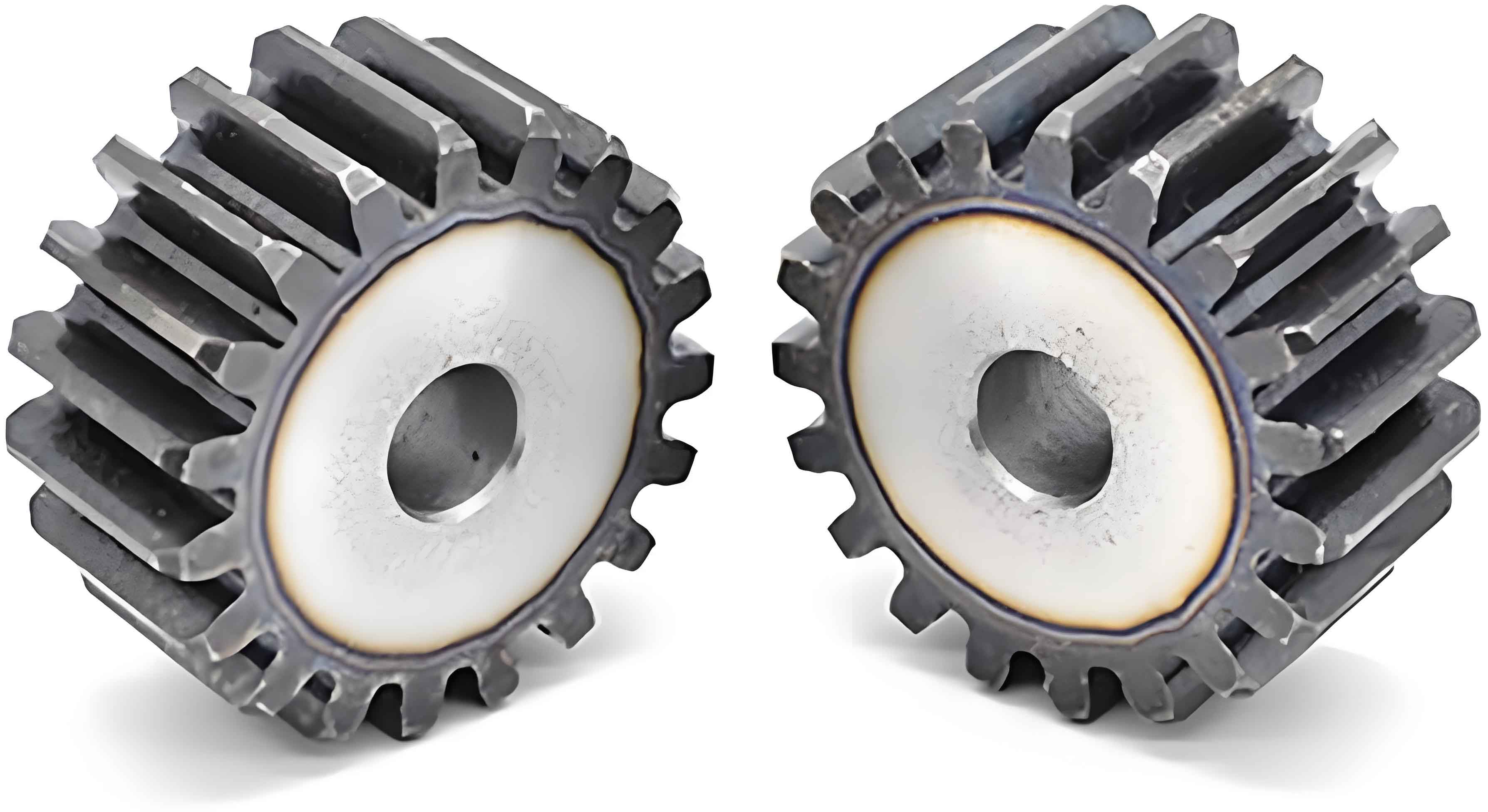Abstract
To accurately calculate the time-varying meshing stiffness of spur gear pairs in their real meshing state, a method based on Tooth Contact Analysis (TCA) and Loaded Tooth Contact Analysis (LTCA) is proposed. This article summarizes the research with tables and visualizations to enhance readability.
Keywords: spur gear drive; tooth modification; TCA/LTCA; time-varying meshing stiffness

1. Introduction
Spur gear is widely used in power transmission devices such as aerospace engines and military ships due to their accurate transmission ratio, high torque capacity, and long service life. The variation in time-varying meshing stiffness caused by uneven loading deformation during gear meshing is a significant internal excitation form in gear systems, affecting the stability of transmission systems and causing vibration and noise.
| Method | Description | Advantages | Disadvantages |
|---|---|---|---|
| Potential Energy Method | Converts gear teeth into cantilever beam models on the pitch circle. | Simple model and calculation. | Large model simplification, inaccurate results. |
| Finite Element Method | Establishes gear models to calculate normal force and elastic deformation. | High precision. | Complex mesh parameters, potential accuracy errors. |
| Ishikawa Method | Calculates stiffness based on gear geometry and material properties. | Easy implementation. | Limited accuracy for complex gear shapes. |
The research on the calculation of gear meshing stiffness has been extensively conducted by scholars both domestically and internationally. However, the potential energy method simplifies the model too much to reflect the real tooth meshing state, while the finite element method requires complex mesh parameters, which may cause corresponding accuracy errors. Therefore, this article proposes a method combining TCA/LTCA to calculate the time-varying meshing stiffness of spur gear.
2. Calculation of Time-Varying Meshing Stiffness
Time-varying meshing stiffness refers to the total stiffness of all tooth pairs involved in meshing within a complete meshing cycle. Due to the continuity of spur gear transmission, the number of tooth pairs involved in meshing changes over time, leading to variations in meshing stiffness throughout the meshing cycle.
The definition of time-varying meshing stiffness is the proportional coefficient between the normal load on spur gear teeth and their displacement within the elastic range. Therefore, the time-varying meshing stiffness K can be obtained by:
K = P / δ (1)
Where P is the instantaneous total meshing force along the contact line within a meshing cycle, and δ is the instantaneous total deformation of the gear teeth.
By calculating the time-varying meshing stiffness at different meshing positions using Equation (1) and performing cubic Hermite interpolation, the time-varying meshing stiffness curve can be obtained, providing more accurate data for the dynamic performance analysis of spur gear systems.
3. Modeling for Solving the Total Meshing Force
Gear modification is one of the primary measures for vibration and noise reduction in gear transmission systems. The TCA model of gear transmission can accurately reflect the meshing process of modified gears. Combined with LTCA technology, the instantaneous total meshing force P and instantaneous deformation δ of the gear teeth within a meshing cycle can be obtained.
By constructing the TCA and LTCA analysis models for spur gear pairs in their real meshing state, considering tooth profile modification and installation errors, the tooth surface load distribution factor and transmission error can be obtained using mathematical programming and finite element methods.
Conclusion
This article proposes a method for calculating the time-varying meshing stiffness of spur gear pairs in their real meshing state based on TCA/LTCA. The method combines gear meshing theory with mechanical analysis, reflecting the real tooth meshing state with high calculation accuracy. It effectively compensates for the low efficiency and long calculation time of the potential energy method and finite element method when dealing with complex gear tooth shapes. The results show that tooth profile modification affects the amplitude and mean value of the meshing stiffness of spur gear pairs, decreasing with the increase in modification amount and length, with a 3.1% difference compared to the finite element method, verifying the accuracy of the results.
